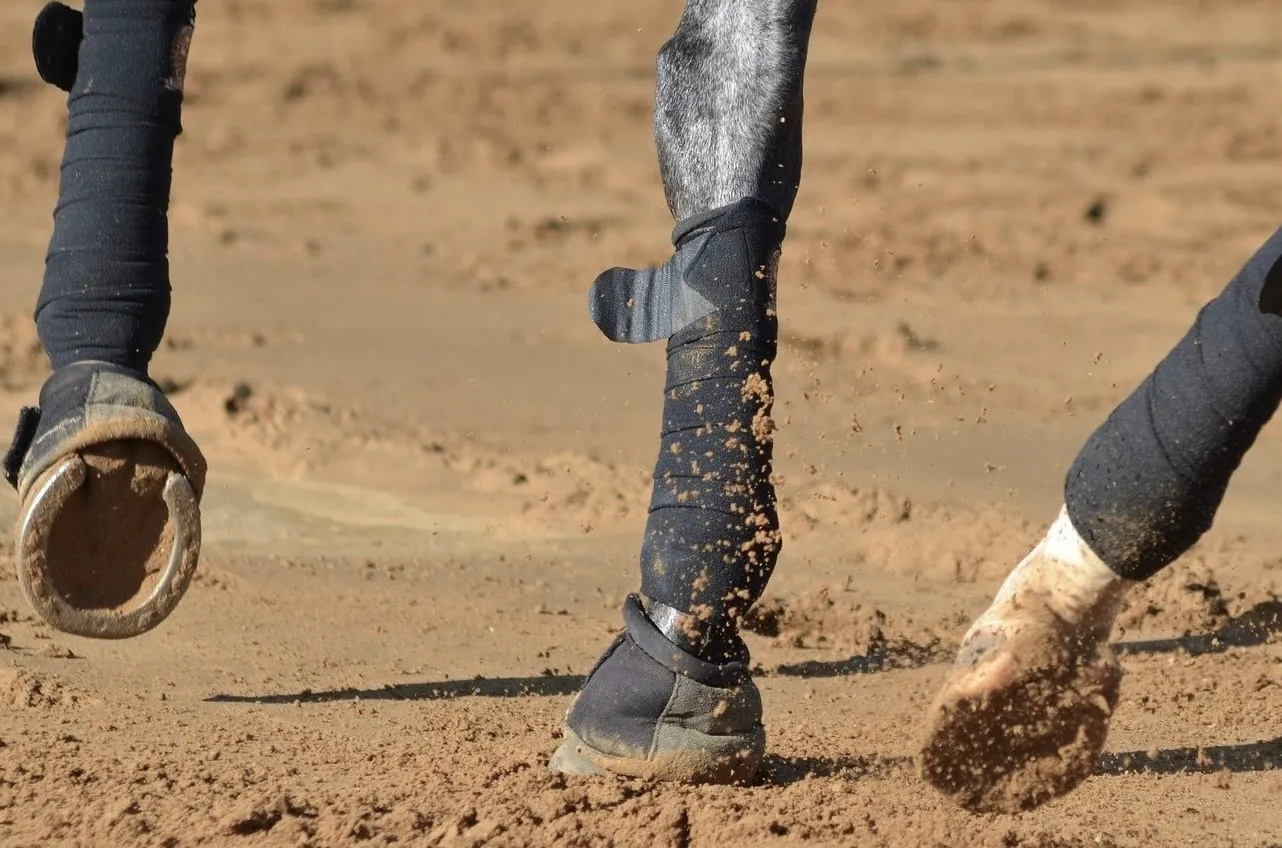Menu

We'd all love to own a luxurious, well-drained riding arena with five different materials, ensuring we glide through our dressage programmes without a damp hoof to show for it. But such an arena is expensive – very expensive. So what do you do when the weather gods often conspire against us here in the UK? We offer a possible solution to the riding arena dilemma; however, it's not a guarantee that you'll avoid a wet arena entirely. Still, it's nice to know the alternatives, so we'll provide them here.
Read also: 10 reasons why equestrian sport is the world´s best hobby and lifestyle
If you have a large plot of land, such as a field, and want to create a riding arena, the first thing you should do is find the highest point. No matter how much money you spend on an arena, it will never be perfect in terms of water on the arena if it's placed in a valley or some form of depression. In this way, water will always end up in the arena, and even the smartest materials and finest drainage systems will struggle to cope with this during the wet autumn and winter months.
It's a good idea to get a sense of the surface you'll be building the arena on. If you have sandy soil, for example, or an area on your property that is well-drained, this could be a good spot. There might be materials in the soil from previous construction, or you may be lucky enough to have soil layers that work well for drainage. In such a situation, you'll save yourself many rides on a very wet arena by building your new arena here. However, it's important to remember that if you don't want to pay a fortune for a new arena, you should be prepared for days when it's still tricky to ride on it – regardless of how much natural drainage there is in your field.
Consider how much you'll use the arena. If you're the type of rider who enjoys one or two arena rides per week (or less) and can make do with a hack in the woods when it's too muddy, a more affordable arena solution may be the best fit for you. Your horse might not use the arena much during the winter anyway. In this case, it doesn't make much sense to invest in a £10,000 solution (or more). However, if you're a high-level competitive rider who wants to train your horse several times a week, a cheap solution probably won't be satisfactory enough for you and your horse.
One of the hardest things about riding arenas is choosing the materials. There are many options and solutions from various arena builders, and you'll need to assess what is financially feasible. If you simply want an affordable arena with a single material, make sure to find the most naturally drained spot on your land. Then lay sand with a grain size of 0-8 mm directly on the green area. You should still be cautious when using it, especially in poor weather.
For several months of the year, riders across the country face weather-related challenges. In other words, there's quite a lot of rain, which is why it might become necessary to drain your riding arena in the long run. Drainage can be placed around the arena and can also run across it, like it does in cultivated fields. When draining along the edge, there should be a drain pipe to a gully, and the drain pipes should have a diameter of about 50-75 millimetres. You can find more information about draining riding arenas on various companies' websites that build them.
Dust can be a significant issue during the summer, and it's crucial to water the arena to avoid respiratory problems for both horse and rider. Watering may sound simple, but you need to pay attention to how it's done to prevent uneven watering and the formation of large "puddles" on your arena. Incorrect watering can ultimately cause more harm than good to the materials. You can find several videos on YouTube demonstrating watering machines for this purpose.
Read also: Time and money: 9 unavoidable facts about equestrians
Riding arenas come in different sizes, depending on whether you're a showjumping or dressage rider. A dressage arena is typically 20 x 40 m or 20 x 60 m. Training and competition showjumping arenas are 80 x 100 m or larger. Again, the dimensions aren't critical if you're a casual rider, but if you plan to participate in competitions occasionally, it's wise for you and your horse to practice exercises on an arena with the correct dimensions. It's also smart to consider the width of your entrance to the riding arena. You'll likely need to add new material to your arena from time to time, so the entrance must be wide enough for a lorry to come in and unload sand, gravel, crushed stone, or whatever you decide to use. A minimum width of three metres is preferable.
Regardless of the cost of your riding arena, like everything else, it needs proper maintenance. This typically involves running a harrow over it to remove any clumps, overgrowth, and bumps. It's essential to perform this correctly to avoid damaging the sublayer of crushed stone if you have one or causing other damage to the surface. Various arena builders also recommend adding new material every two or three years if the arena is heavily used. If you have a high-quality, expensive arena, it's a good idea to remove the top layer and add a new one. If you have a more affordable solution, adding some extra surface material as needed and perhaps removing poor or excess material when you think it's necessary can be beneficial.